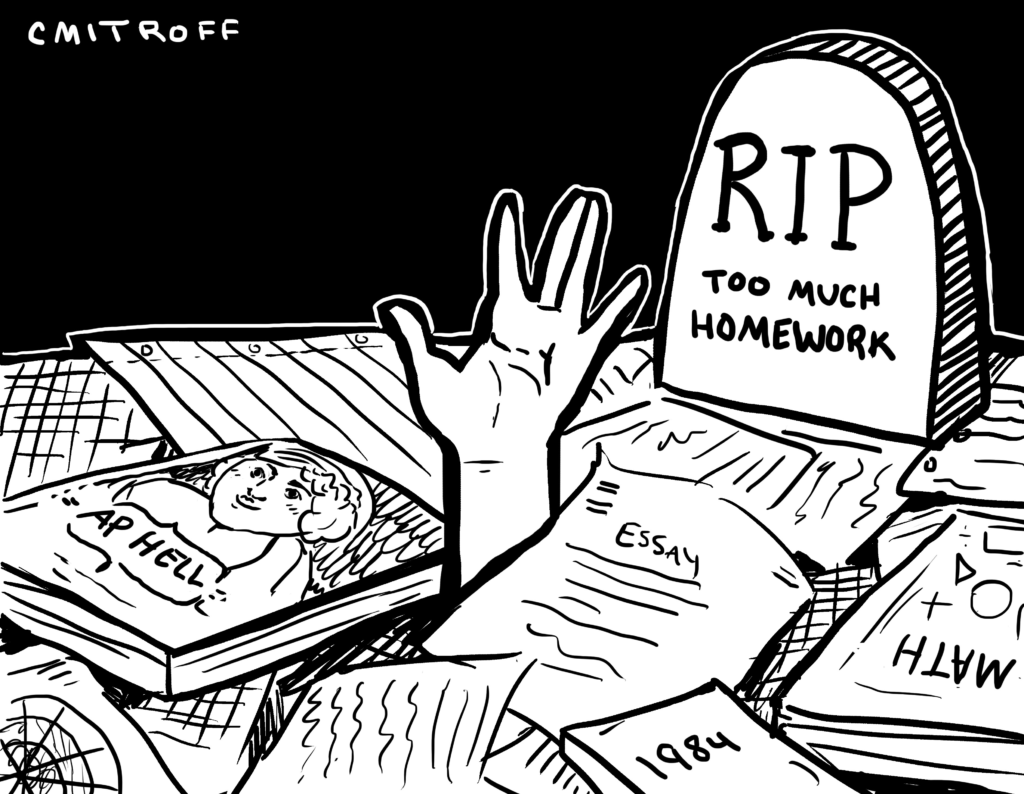Student burnout has become a pervasive issue in American high schools, and its effects are concerning. This phenomenon is characterized by a loss of motivation among students and an alarming surge in academic stress. In May 2023, a report revealed that a staggering 59.9% of high school students reported experiencing symptoms of student burnout, and this percentage continues to rise. The implications of such high prevalence are far-reaching and include elevated levels of anxiety, mental health issues such as depression, and a toll on physical well-being due to the resulting exhaustion. To address this escalating crisis, a concerted effort is needed from various stakeholders. Teachers play a pivotal role in identifying the signs of burnout in their students and offering support through flexible teaching approaches and open communication. Parents should actively engage in their children’s lives, not just academically, but by promoting a balanced lifestyle and emotional well-being. Administrators, too, must take proactive measures to reduce excessive academic pressure, ensure access to mental health resources, and implement programs that foster a healthier learning environment.
Student burnout is a pervasive issue that requires a thorough examination of its root causes. One significant contributing factor is academic pressure, which has become more intense due to the rising competition in college admissions. Students often feel obligated to enroll in numerous advanced courses to enhance their academic resumes, leading to increased stress levels. Moreover, personal factors such as inadequate time management skills, financial stress, social isolation, and excessive screen time can also contribute to burnout. Juggling multiple responsibilities can lead to exhaustion and ultimately contribute to student burnout. To prevent burnout, it is crucial to recognize these underlying causes and develop effective strategies that prioritize academic success and well-being. Recognizing these multifaceted causes is pivotal in our collective effort to address and prevent student burnout. By understanding the underlying issues, educational institutions, parents, and students themselves can work together to develop effective strategies that promote academic success and well-being while minimizing the risk of burnout.
Student burnout is an alarming issue, one that requires a multi-pronged approach to mitigate its impact effectively. Time management skills and the establishment of realistic goals can be instrumental in helping students balance the overwhelming demands of academics and personal life. Equally important is the presence of a robust support network comprising friends, family, and mental health professionals who can offer emotional assistance during challenging times. Encouraging self-care through regular exercise, balanced nutrition, and adequate rest plays a significant role in stress management and overall well-being. Open communication with professors and employers is essential to address specific needs and seek accommodations. Reevaluating priorities is crucial, helping students set realistic expectations for themselves and adjust their commitments accordingly. Finally, mindfulness practices and easy access to mental health support can provide valuable coping mechanisms to deal with academic pressure, ultimately contributing to a more balanced and fulfilling life. By adopting and integrating these strategies into their daily routines, students can better navigate the hurdles of academia, reduce their risk of burnout, and ultimately lead happier, healthier lives.
In conclusion, student burnout is a pressing issue that demands our attention and collective effort to address. It not only affects academic performance but also takes a toll on the mental and physical well-being of students. Recognizing the multifaceted causes of burnout and implementing a range of strategies, such as time management, a strong support network, self-care, and open communication, can significantly mitigate its impact. As we strive to foster a healthier learning environment, educators, parents, and students themselves must come together and prioritize the holistic well-being of our young learners. By addressing and preventing student burnout, we can pave the way for a more balanced and fulfilling educational journey, ultimately enabling students to reach their full potential while maintaining their mental and physical health.
Works Cited
“3 Reasons You’re Experiencing College Burnout (& How to Deal).” 3 Reasons You’re Experiencing College Burnout (& How to Deal) | Department of Economics, 8 Jan. 2019, economics.virginia.edu/news/3-reasons-you%E2%80%99re-experiencing-college-burnout-how-deal.
“Dealing with Study Burnout.” Albert Einstein College of Medicine, www.einsteinmed.edu/education/student-affairs/academic-support-counseling/medical-school-challenges/study-burnout.aspx. Accessed 7 Oct. 2023.
Marken, Zach Hrynowski and Stephanie. “College Students Experience High Levels of Worry and Stress.” Gallup.Com, Gallup, 31 Aug. 2023, www.gallup.com/education/509231/college-students-experience-high-levels-worry-stress.aspx#:~:text=WASHINGTON%2C%20D.C.%20%2D%2D%20During%20the,36%25%20sadness%20the%20previous%20day. Nair, Madhu. “Academic Burnout: How to Prevent It and What to Do: Uopeople.” University of the People, 17 Nov. 2023, www.uopeople.edu/blog/what-is-academic-burnout/.
